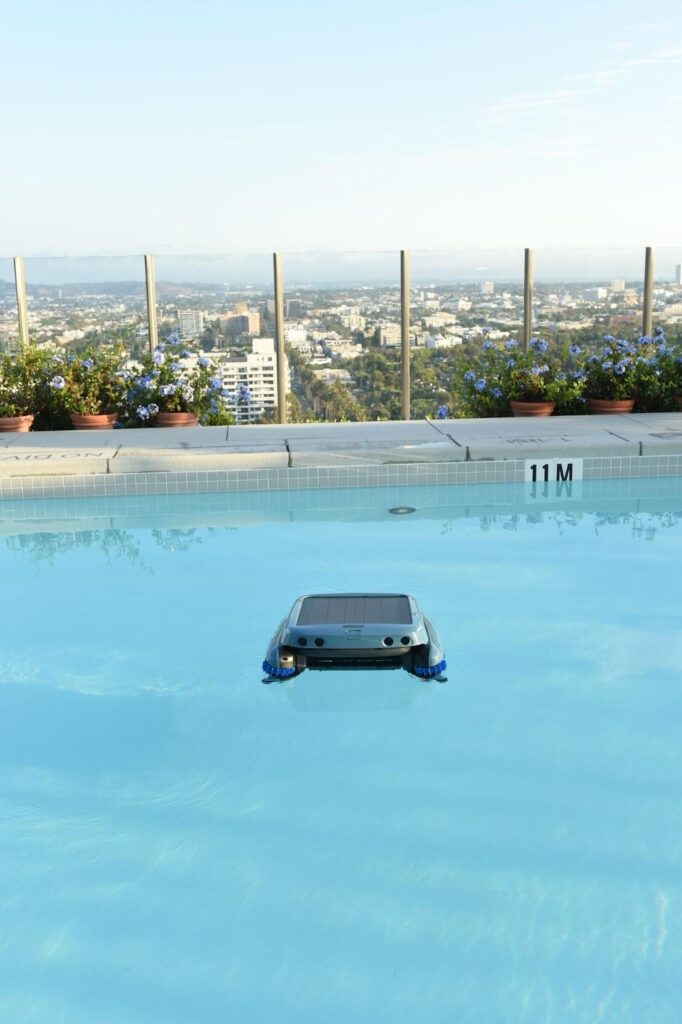Swimming pools are a luxury and a retreat, especially during the hot summer months. However, pool maintenance can be time-consuming and labor-intensive without the right tools. In this article, we’ll dive into a detailed comparison between robotic swimming pool vacuums and traditional pool cleaner to help you decide which option best suits your pool maintenance needs.
Understanding Robotic Pool Vacuums
Robotic pool vacuums are autonomous cleaners that work independently of the pool’s pump and filter systems. Equipped with advanced sensors and powerful motors, these devices scrub, vacuum, and filter the water simultaneously.
How They Work
A robotic pool vacuum typically has a built-in pump, filter, and sensors. It operates by mapping out the pool to avoid obstacles and efficiently cover the entire surface.
Understanding Traditional Pool Cleaners
Traditional pool cleaners generally fall into three main categories: suction-side, pressure-side, and manual. Unlike robotic vacuums, these require either a direct connection to the pool’s filtration system or manual operation.
Types of Traditional Cleaners
1. Suction-Side Cleaners – Connects to the pool’s filtration system, using suction to remove debris.
2. Pressure-Side Cleaners – Utilize water pressure for movement and debris collection.
3. Manual Cleaners – Handheld vacuums or brushes that require user operation.
Efficiency and Performance
Robotic Pool Vacuums: Robotic vacuums are highly efficient, using less energy than traditional systems, as they operate independently.
Traditional Pool Cleaners: Since traditional cleaners often rely on the pool’s pump, they might increase energy consumption slightly, especially suction-side cleaners.
Maintenance and Durability: Maintaining robotic vacuums generally involves emptying filters and occasional part replacements. Traditional cleaners, especially manual ones, might require frequent maintenance but are usually easier to repair.
Ease of Use and User Convenience
Robotic Pool Vacuums: With automated operation and programmable settings, robotic vacuums are exceptionally convenient for users who prefer minimal intervention.
Traditional Pool Cleaners: Traditional options involve manual setup, such as connecting hoses or manually maneuvering the device around the pool.
Cleaning Coverage and Capability: Robotic pool vacuums often excel at covering all areas, including walls, floors, and the waterline. Traditional cleaners may need help to reach certain places, particularly the walls or steps.
Technology and Automation: Robotic vacuums frequently include advanced technology, such as app connectivity and scheduling features, that allow users to control the cleaning process remotely.
Cost Analysis: While robotic vacuums tend to have higher upfront costs, they are often more energy-efficient over time. Traditional cleaners might have lower initial costs, but potential increases in energy usage could impact long-term expenses.
Environmental Impact: Robotic pool vacuums, operating independently, often consume less energy and water. Traditional cleaners, on the other hand, may use more resources since they typically connect to the pool’s filtration system.
Safety and Reliability: Robotic vacuums are generally designed with safety in mind. They operate at low voltage and pose a minimal risk. Traditional cleaners can sometimes cause wear and tear on the pool’s filter and pump systems.
User Preferences and Reviews
Customer reviews reveal that robotic vacuums often receive high marks for convenience and thorough cleaning, while traditional cleaners are appreciated for their affordability.
Best Situations for Robotic Vacuums: Robotic vacuums are ideal for larger pools or users who value automation and have a flexible budget.
Best Situations for Traditional Cleaners: Traditional pool cleaners are best suited for smaller pools or for budget-conscious users who are willing to put in some manual effort.

FAQs
Are robotic pool vacuums worth the investment?
Robotic vacuums are often worth the higher upfront cost for users who value convenience and automation.
Do robotic vacuums clean walls and the waterline?
Yes, many robotic pool vacuums are designed to clean walls, floors, and even the waterline.
Which type of cleaner is more energy-efficient?
Robotic vacuums are generally more energy-efficient since they operate independently of the pool’s pump.
Are traditional cleaners better for smaller pools?
Traditional cleaners, mainly manual or suction-side models, are often cost-effective for smaller pools.
Can robotic vacuums handle large debris?
Robotic vacuums are effective with small to medium debris but may struggle with large pieces.
What is the lifespan of a robotic pool vacuum?
With proper maintenance, robotic pool vacuums can last several years, making them a worthwhile investment for many.
Conclusion
Choosing between robotic pool vacuums and traditional pool cleaners largely depends on your specific pool size, maintenance needs, and budget. Robotic vacuums offer convenience and high efficiency, while traditional cleaners remain cost-effective for smaller pools. Ultimately, understanding the pros and cons of each option can help you make an informed decision for hassle-free pool cleaning.
